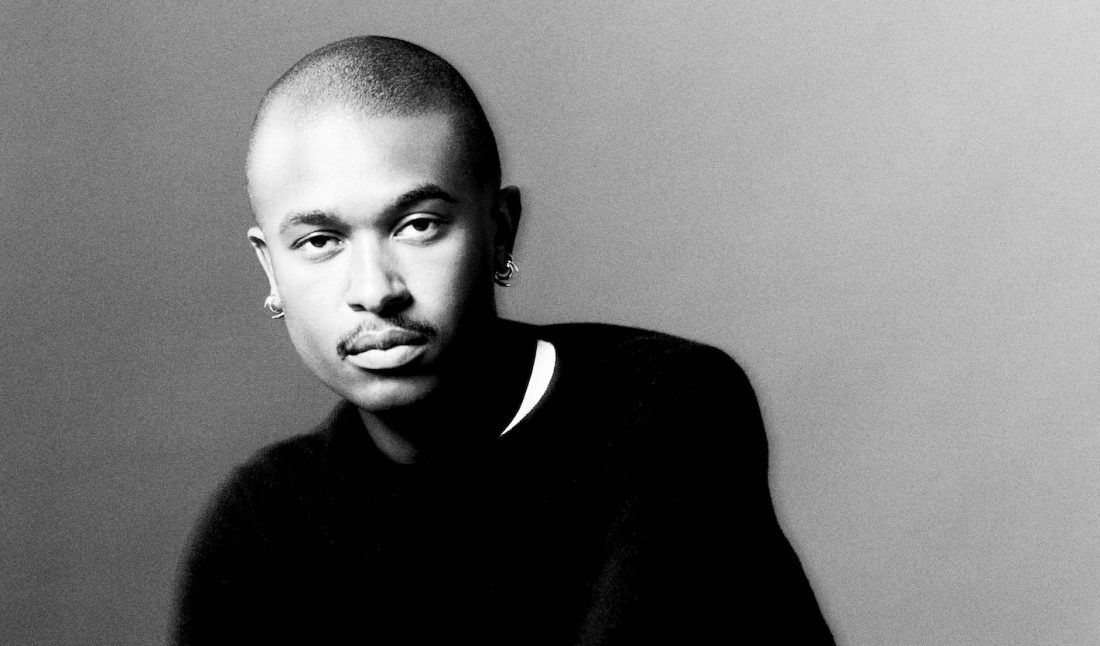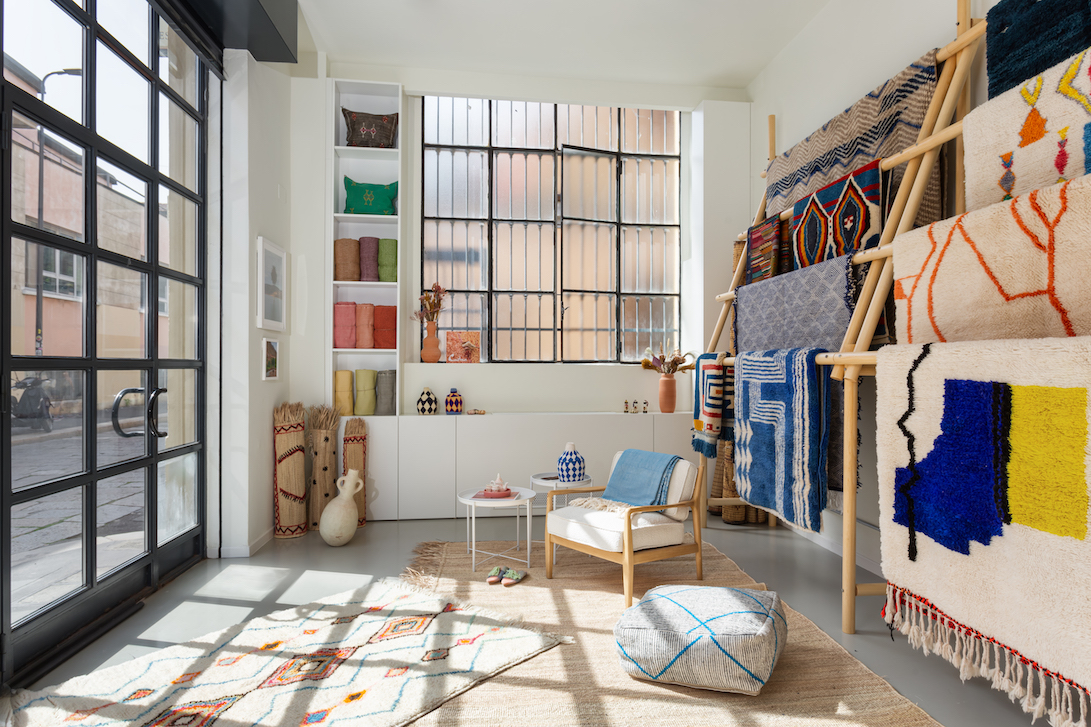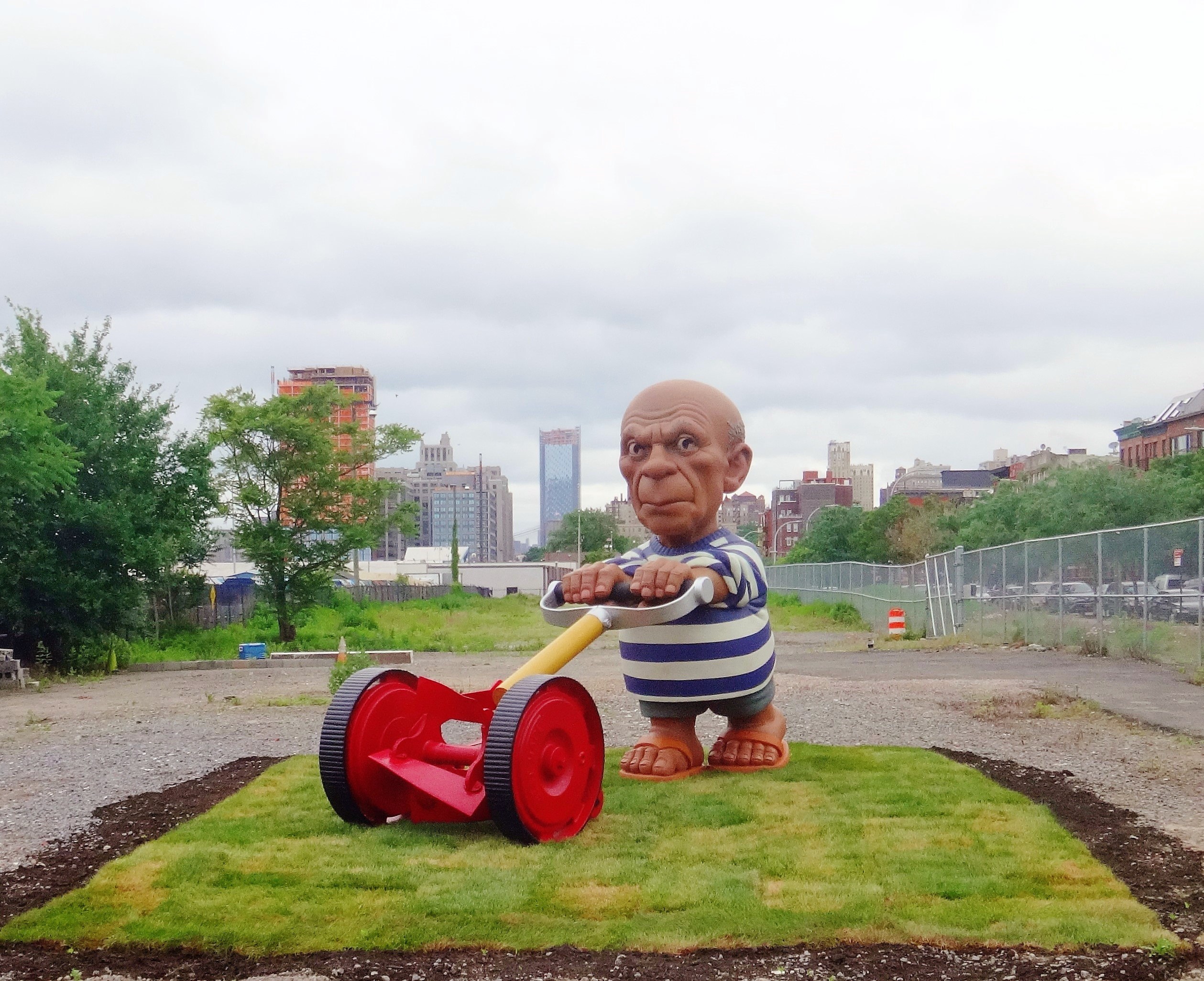When I spoke to Maximilian Davis in late July, just before his summer holiday, I was struck by his warmth and approachability. He was quick with a smile and earnest with his purpose. He was clearly clever and keenly focused. In his two years as creative director of Ferragamo, Davis has been devoted to making a full wardrobe the Ferragamo customer—and beyond—can see themselves in, could wear every day, and would want to pass on.
For his first collections at the house, he stripped back branding and an overt use of logo, putting forth more minimal pieces that were still incredibly sensual and desirable. He zoned in on the Ferragamo red and dove into the considerable Ferragamo archives to reimagine the bags, scarves, shoes, and ties we’ve always been drawn to. His deft tailoring allowed him to play with silhouettes that felt innovative but still wearable. His approach is clear: You wear Ferragamo, Ferragamo does not wear you.
His latest collections showcase an understanding of where the luxury market is today—still expert proportions, always luxe fabrications, but with an element of wearability, approachability, and honesty. He wants us to see ourselves in Ferragamo.
Davis spoke with Whitewall about finding that sense of today in the spirit of the seventies and twenties alike, translating the joy and friendship of the making of each piece into the energy we see of Ferragamo’s clothes, accessories, and images.
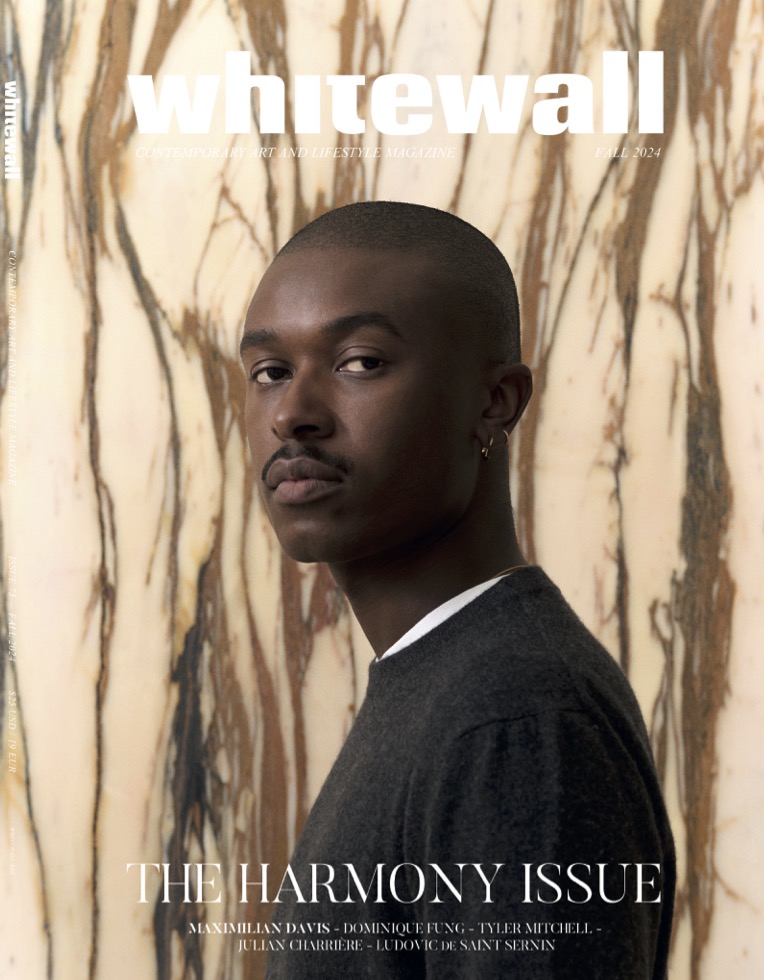 Portrait of Maximilian Davis, photo by Rita Lino.
Portrait of Maximilian Davis, photo by Rita Lino.
WHITEWALL: The most recent collection we’ve seen, pre-Spring 2025, looked to the spirit of the late 1970s. What drew you to the 1970s?
MAXIMILIAN DAVIS: Multiple things. Obviously, the seventies was the moment when people were having fun, it was that glitzy glamour, all that stuff. When I start a collection for Ferragamo, I always look into the archive and whether it’s through products, catalogs, or old campaigns. And what inspired me for this collection was the campaigns from the late seventies. They showed the family of the brand. It was family and community—a softer, more romantic side to the way that they were showing the collections.
The photography at that time was very cinematic and, again, romantic, in a way. There was one image that I really enjoyed looking at and using as a source of inspiration. It was an image of a chest of drawers which had jumpers and T-shirts and blouses all just hanging from each drawer. And below was a row of the pumps, the ballerinas, the moccasin, and the brogue. It was showing the Ferragamo wardrobe that felt very real and very honest.
With how people are shopping right now and how people are looking at luxury fashion, they want something that is very real, firsthand, very honest, and comfortable. I think people want to look at something and see themselves in it, they want it to be relatable. And all of these codes from the Ferragamo campaigns led me to a starting point.
“I think people want to look at something and see themselves in it, they want it to be relatable”
Maximilian Davis
WW: Actually seeing and imagining the pieces at home in your own wardrobe.
MD: Actually seeing it at home in your wardrobe, actually seeing a family of people wearing one brand, and presenting that in a way that felt very cool and very honest. That’s what I wanted to do. I really wanted to bring in a sense of something very real, and something quite fun, and sexy, and very elegant at the same time.
When designing the wardrobe for this collection, it was a case of, what are the pieces that have been passed down through families, like an heirloom piece. We were looking at the aviator jacket, your husband’s turtleneck and adding slashes to make it more feminine, looking at ties and using them as belts. One of the things that I found interesting at Ferragamo were the scarves—really looking into the scarves that were used in campaigns, whether they were wrapped around ankles, heads, or tops. It was using those scarves as a starting point for designing the ready-to-wear, displaying it on your T-shirts, dresses, blouses, having a full wardrobe of scarf dressing.
I was thinking about the bags that we have. They were very classic and they had a status to it. It felt like were missing this casual attitude, this attitude that felt a lot more soft, grab-and-go, and easy. We took one of our new bestselling bags, which is the Hug bag, and we deconstructed it. We made it very soft, very slouchy, where the leather is kind of collapsing and feels a lot more easy as your everyday bag. It’s being put on your shoulder, and it just felt more transitional for the wardrobe of the woman of Ferragamo.
WW: I love that the idea of something being softer, more buttery as both luxurious and super wearable, approachable.
MD: I think that’s what luxury is today. I think there was a point where luxury fashion had been your status piece, something that you would wear once and get all the comments, take a few photos, and put it back in the box and hide it away. Which, I’m not going to lie, I still do this. But I do think that the way that people are shopping right now, they’re shopping for quality and durability. They want pieces that they can wear every day and still have that same feeling when they first bought it. That kind of mentality is a new way for luxury fashion, I think.
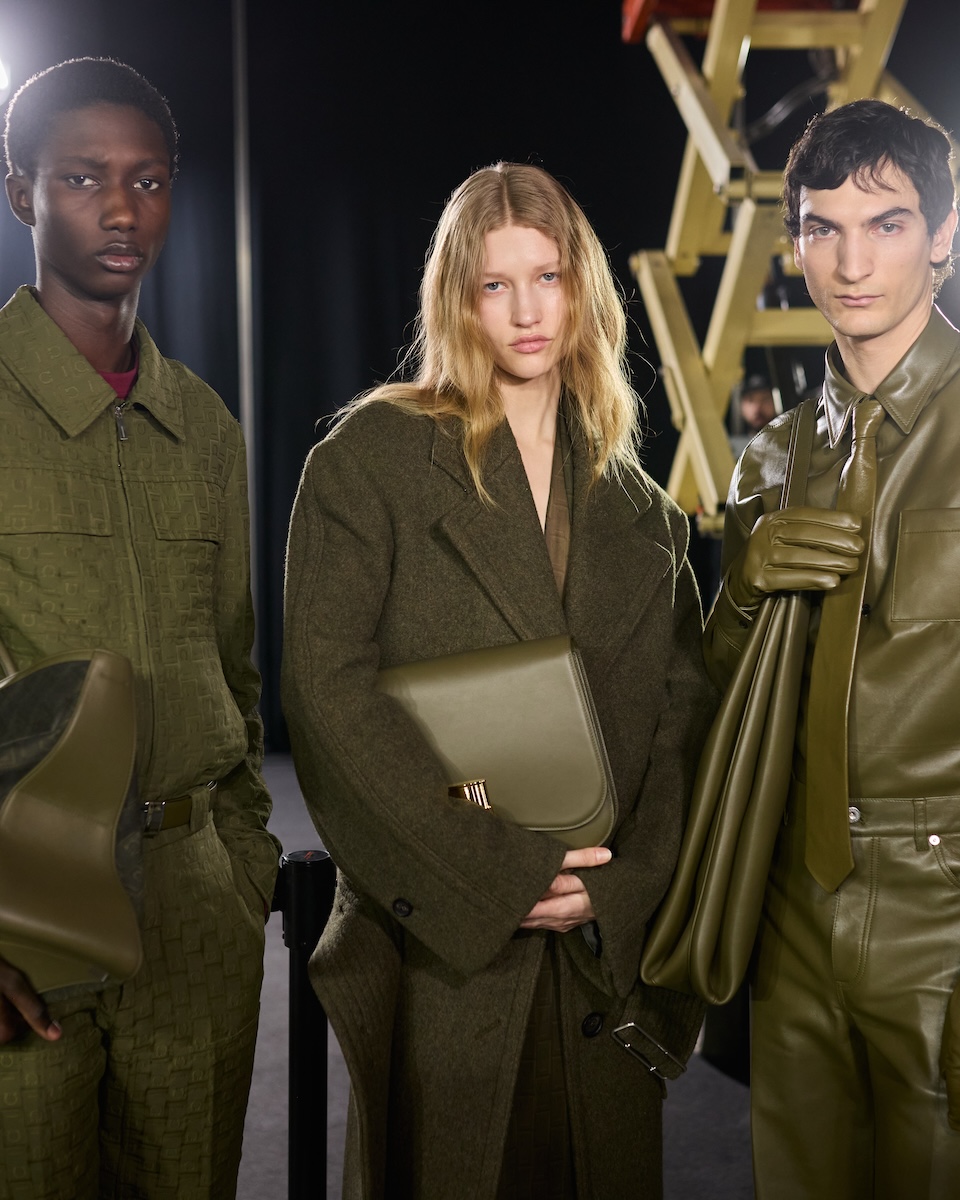 Photo: Filippo Fortis / Gorunway.com, Courtesy of Ferragamo.
Photo: Filippo Fortis / Gorunway.com, Courtesy of Ferragamo.
A Desirable, Eye-Catching, and Recognizable New Fall Collection
WW: You’re thinking about the way people want to invest in fashion, too, as you mentioned, that family heirloom that’s been passed down. How does that frame your approach when designing?
MD: When you think about the most accessible things in a luxury brand, it will either be makeup or fragrance. If it’s not that, then it goes into shoes or bags. Those are pieces that people either save up for, ask for as gifts, or they receive as gifts. Those are the investment pieces. It’s about making them desirable, eye-catching, recognizable, and adding signifiers that make them less minimal.
When I joined, I stripped back all of the branding. I tore everything back. I feel like this time, we needed to decide how we could do it our own way, that felt clean. So really using that hardware to develop the pattern that we have on the bags, the ready-to-wear, and the shoes. That was the way we could develop one of the signifiers for Ferragamo.
Honoring Time, Family, and Art at Ferragamo
WW: For the Fall 2024 collection, you looked, as you always do, to the archives. There you were drawn to the freedom of the 1920s. What stood out to you there?
MD: I had a conversation with my CEO, and he was like, “Just do what you do best. Try to make things more yourself, as well.” Because there was a part of me that the family and the brand was interested in. They approached me, they saw what I was doing as a young brand, and they wanted a kind of part of that. My brand was based on my heritage in Trinidad, which is all about the celebration of freedom.
The twenties was a point where people were rebelling against society, creating their own communities. It was a lot more relaxed in the way people were dressing. In terms of the silhouette, the lines were becoming a lot more dropped and more relaxed, but that piece of glamour was still important. I felt that looking at all of the T-bar strapped shoes from Ferragamo, I appreciated the idea of the women in the twenties using coats as a form of protection, and underneath having the flapper dresses. That combination of something quite masculine and feminine was something that I thought was fun and playful.
When my team and I make a collection, we look into art movements. This was the period when Surrealism and Dada art movements were taking place. I’ve always been interested in surreal art and its feeling. I was thinking about how I could re-create this through garments and through products. Towards the end of the collection, you start to see a lot of the looks becoming more dark, playing on liquid satin and embroidery. This is also when the lapels became very extreme, and really frame the portraiture of the face.
I had so much fun doing embroidery, I had so much fun dealing with the proportions and making things more relaxed, and freeing. It just made sense for today and how people want to dress.
“When my team and I make a collection, we look into art movements,”
Maximilian Davis
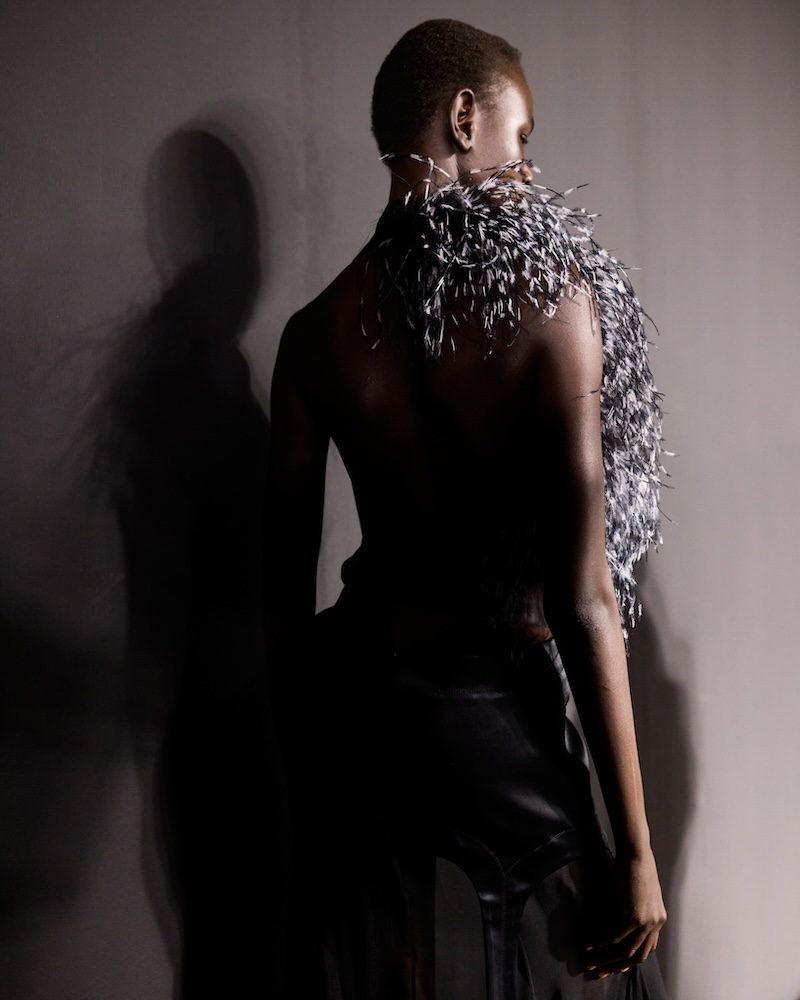 Photo: Filippo Fortis / Gorunway.com, Courtesy of Ferragamo.
Photo: Filippo Fortis / Gorunway.com, Courtesy of Ferragamo.
Masterful Fabrication Sparks Inner Strength
WW: I love some of the looks that are such luxe texture, their tactility comes across even in a photograph. How do you think about that texture in both the overall look and as a feel on the body?
MD: When we develop fabrics, we’re looking for fabrics that people feel comfortable in. It has an effect on how people are wearing garments, and as soon as you see this person has a confidence or elegance about them, it gives you an inner strength. Fabrication, whether it is very structured and keeps your posture upright, or whether it’s a fabric that feels very satiny and sensual against the skin, is something that I’ve always thought—even when I was making my own brand—it’s something that is a trial and error, it’s not something that happens very easily and straight away. But I think that’s the beauty of it. Having that conversation with the design team about, “How does this feel? How would you feel about wearing this? How would you wear this? What do you see it with?” And again, making sure that that sense of reality is there and is translated into the collection.
WW: You have such a strong background in tailoring, which translates in your collections at Ferragamo. And when you think about tailoring, it obviously looks super smart, right? But the real thing is that it feels fit to your body, like it’s made for you.
MD: There are a few silhouettes that we started from the first season where I’ve played with the proportions a bit more. The first silhouette that I continued was a red tailored jacket worn as a dress. But then in another one it was worn as a jacket with trousers. That silhouette is something we have continued every season, and played with the proportions by making it shorter, making it into a coat. We’ve had this time and ability to play on the silhouettes we’ve been developing and making them recognizable to us—tailoring them and especially looking at what actually works in stores and what people want to buy.
The Ferragamo Ballet Flat Majestically Evolves
WW: In the fall collection and in the inspiration of the 1920s, you focused on the Varina ballet flat. When you went to the archive and learned about the history of the ballet flat, what stood out for you in that style?
MD: In the twenties or thirties, Salvatore was making ballet flats for Georgia O’Keeffe. She had a range of ballet flats. And it wasn’t just her, it was the Hollywood celebrities that were wearing ballet flats—and in the fifties was when Ferragamo really started to take ownership of the ballet flat. This is something that Ferragamo has always been recognized for, to us, to our generation, and to the younger generation as well.
One of my missions was, how do we make it feel modern? How do we make it feel like new clients at Ferragamo want to wear this? And this is where we started to, especially in the campaign, mix the ballet flats with some of the evening dresses. It surprisingly works! And a Ferragamo ballet flat is all about the bows. We really wanted to keep those elements as a code by enlarging it, making it a bit more abstract, a bit more playful. We looked at how people are dressing—not everyone is wearing heels every day. They want to be comfortable, and they want that shoe that is transitional from the day to the evening, and feels elegant.
When I think about an actual ballet shoe, it’s about a sense of security, but also a sense of freedom. It’s a moment where people are wearing the shoe as a form of protection, but also the lightness and the way it was constructed allowed them to be as free as possible. That concept is something we’ve always worked towards: having that sense of freedom and security and protection. It’s something that I believe Salvatore recognized from the beginning, when he took a ballet dancer’s shoe and developed it into something wearable for every day.
“In the twenties or thirties, Salvatore was making ballet flats for Georgia O’Keeffe,”
Maximilian Davis
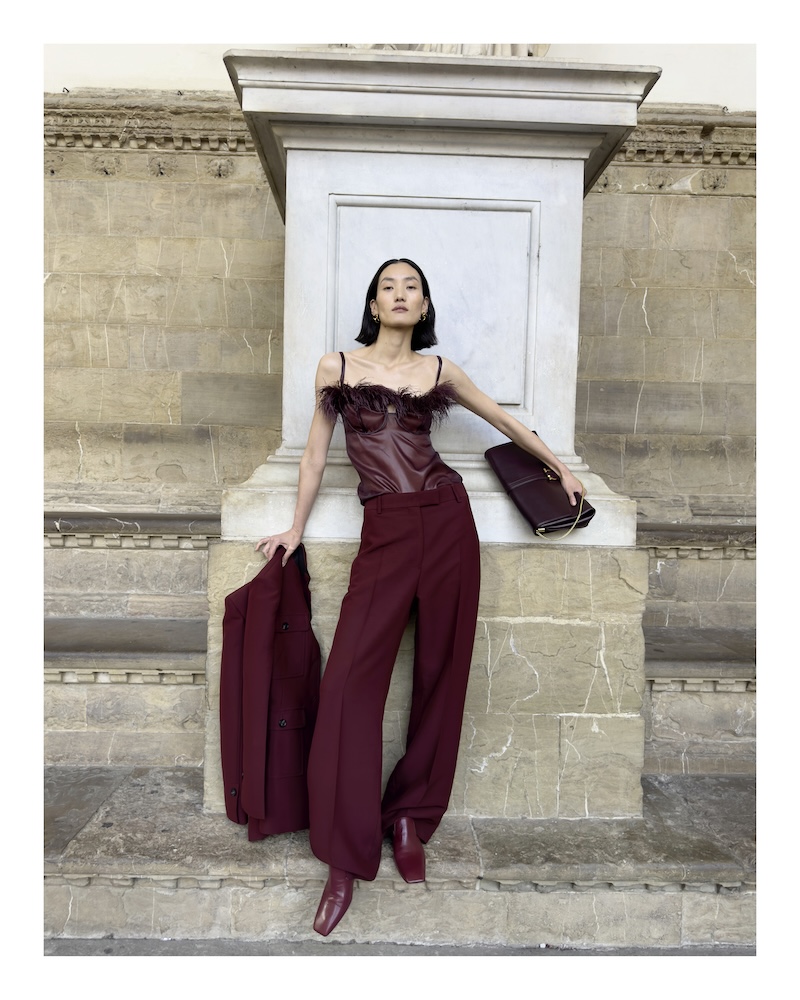 Lina Zhang, Loggia dei Lanzi, 25 May, photo by Juergen Teller, courtesy of Ferragamo.
Lina Zhang, Loggia dei Lanzi, 25 May, photo by Juergen Teller, courtesy of Ferragamo.
A Collaborative Fall Campaign Unfolds in Florence, shot by Juergen Teller
WW: The fall campaign was shot by Juergen Teller. What was it like working with him on this campaign? What kind of feeling did you want to create?
MD: This season and campaign we wanted to make things a lot more relatable and real. People are starting to think about what the Ferragamo world is, but now, does this feel real enough? Do people look at these images and think, “I am that person,” or “I want to be that person?” It’s a conversation we were having with friends and the stylists and people that work with us. What photographer can do this the best? And that was Juergen Teller.
An aim of this campaign was to show the reclaiming and taking ownership of Firenze, Florence, and showing the beauty of Florence in a real light. When we did the first fall/winter campaign we were talking about the Renaissance, Renaissance art. But this time it was taking the Ferragamo community and taking them in front of landmarks of Florence. One of them being Palazzo Feroni, which is the home of Ferragamo, and then also the Loggia, which is a famous landmark.
For me, it was a case of, okay, who are the people of the community of Ferragamo? One of them was Peter Saville—someone that I always admired when I was in school. He’s from Manchester, and he had a very similar upbringing in terms of nightlife and going out in Manchester. When we first met, we were connecting over the Mancunian things, and felt an immediate connection. So much so that we wanted to work with Peter Saville to rebrand the logo and the branding for Ferragamo. When we were thinking about being relatable and thinking, who are the Ferragamo men that actually buy the shoes and wear the shoes and can mix the shoe with the ready-to-wear and make it look cool and modern, Peter is the person. Peter has the attitude, persona, he is the character that we admire.
And looking into my childhood upbringing, looking at models that I’ve always loved, it was Raquel Zimmerman. And when I met her she was the most down-to-earth person, just so honest and real. The whole three days shooting around Florence felt like so much fun. The weather was beautiful, and the way that Juergen works is so spontaneous. You just go walking around with him in Florence, and he’ll go, “Just stand there,” and we shoot. It was the most easy day of work I’ve probably had.
“An aim of this campaign was to show the reclaiming and taking ownership of Firenze, Florence, and showing the beauty of Florence in a real light,”
Maximilian Davis
WW: What an incredible feeling!
MD: I think one of the conversations we all had with Juergen and with the team was, if we have fun on these sets and days, you will be able to see that in the image. You will see that joy coming into that image. You see that collaborative effort coming into that one image, and I believe that’s what came from it.
WW: That totally translates. I imagine that is what you want to capture in the studio, too. And in the making of something, your attitude, your energy that goes into it, is the feeling that comes out.
MD: Definitely. The way that I work with the team is very informal. I put the music on very loud, sometimes if I like a song, I put it on repeat. I have biscuits and sweets and stuff just lying around. It’s fun. I think that what we all do in this industry is intense, and you need a lot of support physically and mentally. I think you need to have the people around you to balance it, whether it’s a biscuit or really loud music, let’s do it. I’m here for it.
WW: You feel that! What’s so beautiful about your time so far at Ferragamo is that you’ve drawn in a new community, while not alienating the longtime Ferragamo customer. When I was preparing for this, I thought of my eighty-seven-year-old stepfather, who always told me, “If you’re going to buy a tie, it can only be a Ferragamo.” He’s from small-town Illinois originally, he’s a fabulous man who’s lived in London and New York, but he’s not got a full luxury wardrobe—yet for ties and Ferragamo, he makes the exception. It’s something he’s lived by. And you’ve managed to keep that classic Ferragamo customer while growing something new.
MD: And that’s something that I was aware of before I joined the brand. I did say, Ferragamo has been like a sleeping giant, a sleeping beast. Ferragamo has always worked. It’s never not worked. It just needed a new energy. It needed a twist to it. And for me, coming into such a big brand, it felt like, “What’s the need of trying to change everything?” It just needs refreshing, you know? And it wasn’t the case to say, “Okay, I don’t want these clients anymore.” It was the case that I still want these clients because it works, and I also want the client that’s going to take the brand to the next level.
“Ferragamo has always worked. It’s never not worked. It just needed a new energy,”
Maximilian Davis
And when you think about what the family has built over the years, you have to pay respect to it. It’s very impressive that each family member had their own go at the brand, and when I go through the archive, I’m like, “Wow, this is insane.” When I hear about some of the daughters of the family members making collections at the age of 16, it’s amazing. You have to pay respect to it, you really do. I don’t think there’s a brand like it today. And I’m very grateful that they’ve given me the support and the space to be able to do what we’re doing here.






